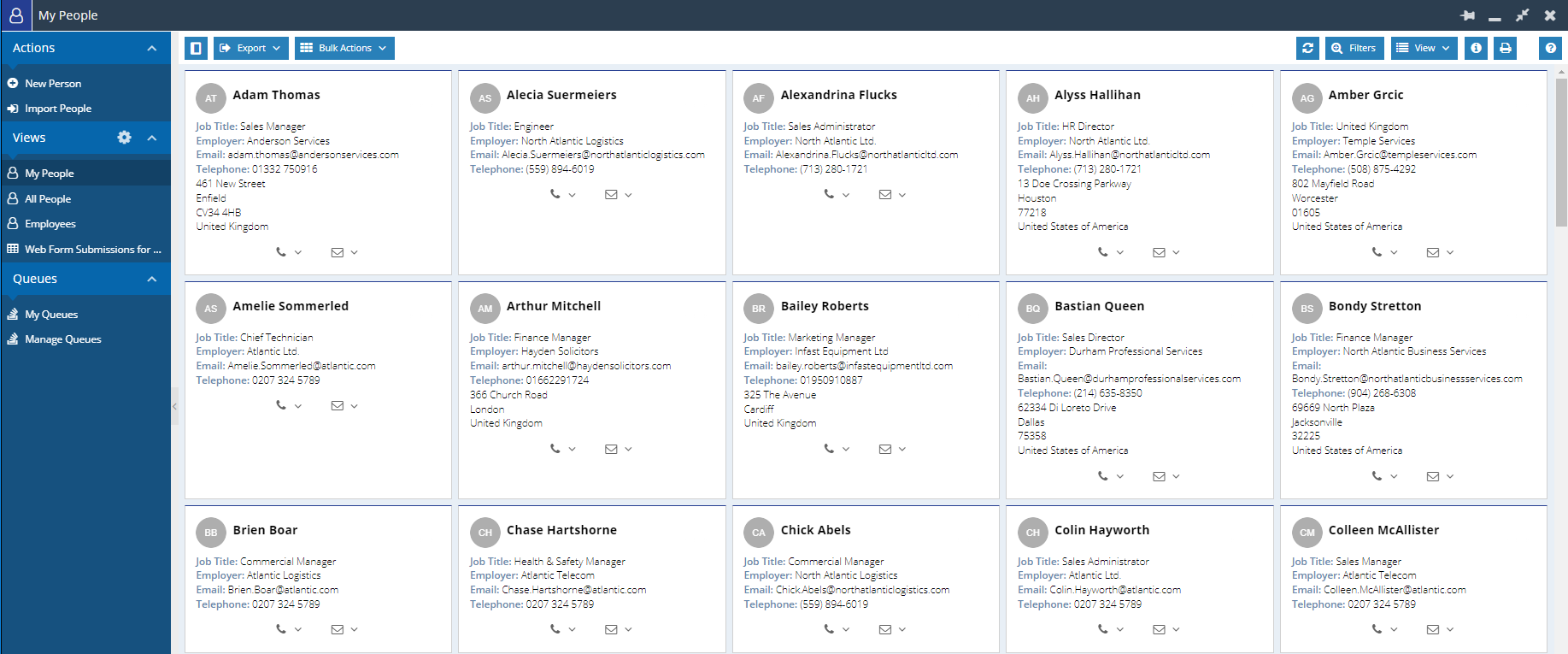Knowledgebase articles
- Welcome to the Knowledge Base
- Introduction
- Training
- Getting Started
- Preferences
- Activities
- Cases
- Importing Data
- Leads
- Marketing
- Introduction to Marketing
- Marketing Campaigns
- Mailing Lists
- Products
- Mailshots
- Upload Library
- Templates
- Event Management
- Compliance Records
- Force24
- Spotler Integration
- What is Spotler?
- Navigating your Spotler homepage
- GatorMail
- GatorLeads / Web Insights
- Tracking Code
- Setting up the Plugin
- Viewing Web Insights Data on your Form Layouts
- Domain Names and Online Activities
- Reporting incorrect Leads created through Web Insights
- Reporting on Web Insights data
- Using UTM Values
- Why aren’t Online Activities being created in the database?
- Why is GatorLeads recording online activities in a foreign language?
- GatorSurvey
- GatorWorkflow
- GatorPopup
- Opportunities
- Projects
- Integrations
- Mapping
- Electronic Signing Tools
- Creditsafe Integration
- Zapier
- Introduction to Zapier
- Available Triggers and Actions
- Linking your Workbooks Account to Zapier
- Setting up Zaps
- Posted Invoices to Xero Invoices
- Xero payments to Workbooks Tasks
- New Case to Google Drive folder
- New Case to Basecamp Project
- New Workbooks Case to JIRA Ticket
- Jira Issue to new Case
- 123FormBuilder Form Entry to Case
- Eventbrite Attendee to Sales Lead and Task
- Facebook Ad Leads to Sales Leads
- Wufoo Form Entry to Sales Lead
- Posted Credit Note to Task
- QuickBooks Online
- Survey Monkey responses to Tasks
- Multistep Zaps
- Email Integrations
- Event & Webinar Integration Tools
- GoToWebinar
- ON24
- Microsoft Office
- Outreach
- Installation
- Outreach Authentication
- Sync People to Outreach Prospects
- Sync Organisations to Outreach Accounts
- Sync Workbooks Opportunities to Outreach
- Sync Tasks/Activities from Workbooks to Outreach
- Sync Outreach Sequences to Workbooks
- Sync Outreach Sequence States to Workbooks
- Sync Outreach Sequence Step Numbers to Workbooks
- Sync Prospects/Accounts/Opportunities from Outreach to Workbooks
- Sync Outreach Tasks/Calls/Meetings to Workbooks
- Scribe/Workbooks Connector
- RingCentral
- Auditing
- Comments
- People & Organisations
- Reporting
- Introduction to Reporting
- Using Reports
- Introduction to Charts
- Exporting Reports
- Advanced Reporting
- Report Snapshots
- Dashboards
- Transaction Documents
- Introduction to Transaction Documents
- Displaying & Adding Transaction Documents
- Copying Transaction Documents
- Transaction Documents Fields Help
- Transaction Documents Line Items Help
- Printing & Sending Transaction Documents
- Managing Transaction Document Currencies
- Managing Transaction Document Statuses
- Setting a Blank Default Currency on Transaction Documents
- Credit Notes
- Customer Orders
- Invoices
- Quotations
- Supplier Orders
- Contract Management
- Sagelink
- Introduction to Transaction Documents
- Configuration
- Introduction to System Administration
- Users & Security
- Database
- Accounting
- Email & Integration
- Customisation
- Creating & Modifying Picklists
- Theme
- Record Types
- Creating Custom Fields
- Report-based Custom Fields
- Linked Fields & Reference Fields
- Record Templates
- Form Layouts
- Customising relationships between parties
- Opportunity Stages
- Custom Records
- Sign In Customisation
- Automation
- Contact Support
- Releases & Roadmap
Worked Examples of Card Views
Initially when switching to View as Cards, you’ll see the most basic version. This can be configured and personalised on all different types of Landing Pages and Record Types by following the guide on the Landing Page Card View Knowledge Base page.

People Records
Here’s an example showing fields that can be added to a Person record Card View on the Multi-Card option.

Here shows standard information on a Person record such as Job Title, Employer, Contact Details and Address. The icon can show:
- a photo of the User to whom the record is assigned is the initials of the Person and cannot be changed within this view;
- a photo of the User who created the record;
- the icon of the Employer’s Organisation record;
- the standard Person record icon;
- the Person’s photo;
- a photo of the User who last updated the record.
If photos aren’t available the initials of the User/Person/Employer will show instead.
NOTE: Columns will be sorted as standard on Landing Pages. Rather than having to click out of Card View, the Sort Columns function can be used within Card View to sort them however you like.
Organisation Records
This example suggests some fields that can be added to a Organisation record Card View using the Single Card option.

This is a more detailed view using two columns. One to show the Org’s Website, Industry and Social Media links, the other to show their Web Insights data. The icon has been changed to show the type of record.
Opportunity Records
This example shows fields that can be added to an Opportunity record Card View using the Single Card with Image option.

This is an even more detailed view of Opportunities, again using two columns. One to show the Prospective Customer, Primary Contact and all information about the Stages and Probability of the Opportunity. The other, giving more details on the notes of the Organisation and the sales process used to win the Opportunity. The picture can be changed to show things such as the Prospective Customer logo or Primary Contact picture. In this example the Assigned To user has been chosen. A date can also be chosen underneath the picture, this is showing the Close Date of the Opportunity, hovering over this will show which date is being displayed.